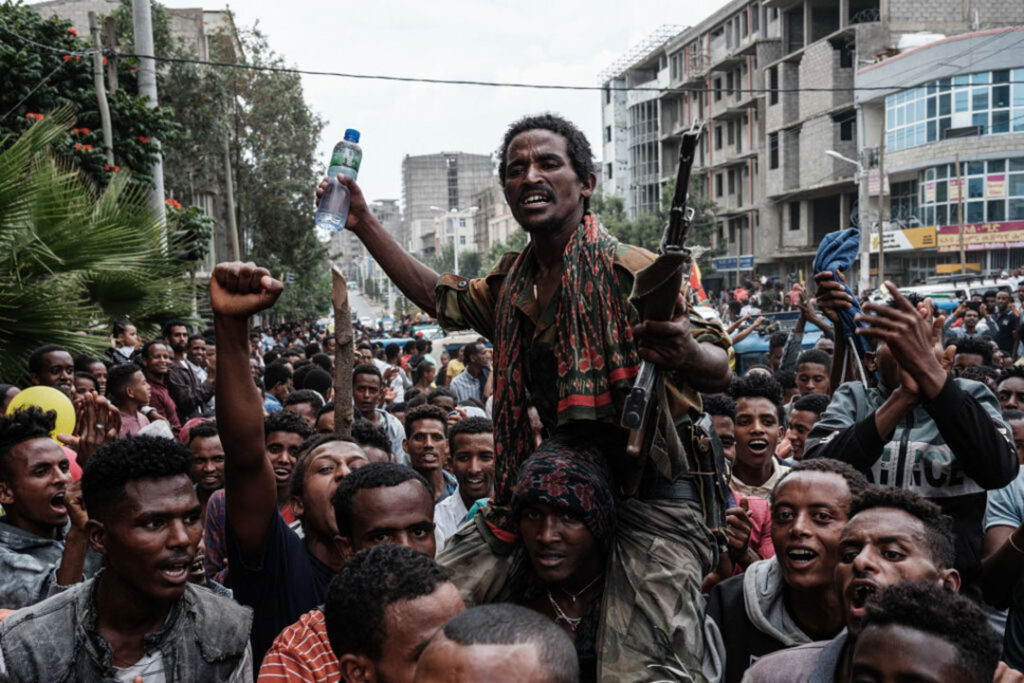ADF STAFF
Standing on the precipice of all-out civil war, Ethiopia shows no sign of turning around.
Instead, the conflict has drawn in all of the country’s 10 separate ethnic regions.
What started as a political dispute in the Tigray region nine months ago turned into a military conflict that has intensified dramatically. Allegations include civilian massacres, hundreds of reported rapes, and using access to food as a weapon by burning crops and denying humanitarian aid.
“It is not hard to see this bad situation getting worse in a handful of different possible scenarios,” Michelle Gavin, senior fellow for Africa Studies at the Council on Foreign Relations, wrote on the think tank’s website. “From potential state collapse to humanitarian catastrophe to the very real risk of genocide.”
Prime Minister Abiy Ahmed, winner of the 2019 Nobel Peace Prize, has been admonished by international leaders for his handling of the spiraling conflict.
Military action against Ethiopia’s former ruling party, the Tigray People’s Liberation Front (TPLF), began in early November 2020 after a long buildup of forces along Tigray’s southern and northern borders.
The federal forces, the Ethiopian National Defense Force (ENDF), were supported by ethnic militias from the Amhara region to the south of Tigray. The ENDF also collaborated with troops from Eritrea, the nation’s northern neighbor and longtime enemy of the TPLF.
Three weeks later, Abiy declared victory despite acknowledging that Tigrayan forces had shifted to guerrilla warfare.
The conflict appeared to be contained to Tigray, the country’s northernmost region, until June 2021 when the TPLF began to repel federal forces and militias.
On June 28, the TPLF retook the region’s capital, Mekelle, and was met by celebrating residents. Abiy called a unilateral cease-fire that same day but admitted two weeks later that it failed.
After taking back most of Tigray, TPLF forces advanced on Amhara militias to the south and the west in July to regain territory that has been disputed for decades.
Tigrayan fighters then moved east into the Afar region in what it claimed was an attempt to break a federal blockade of humanitarian aid.
Abiy responded by threatening to resume the war and calling for a united effort to defeat the TPLF, which his government designated a “terrorist organization” earlier this year.
Forces from Afar; Amhara; Oromia; Sidama; and Southern Nations, Nationalities and Peoples’ regions have joined with the ENDF. The rest of Ethiopia’s ethnic regions — Benishangul-Gumuz, Gambela, Harari and Somali — announced they also will deploy troops.
“Our defense forces, regional special forces and militia are directed to halt the destruction of the treasonous and terrorist TPLF … once and for all,” Abiy stated on August 10. “Now is the right time for all capable Ethiopians who are of age to join the defense forces, special forces, and militias and show your patriotism.”
Experts are concerned about Abiy’s increasingly incendiary rhetoric — he has described the TPLF as “Ethiopia’s cancer,” “weeds” to be removed and a “disease” — and they believe he intends to take the offensive in an effort to destroy the TPLF.
Political analyst Solomon Ketema warns that Abiy’s attempt at building a coalition of ethnic regional forces could backfire.
“A large offensive means the conflict will not anymore be confined in the region,” Ketema told Kenyan newspaper The Daily Nation on August 8. “The intended move is so very dangerous.”
Ketema warned that all sides must take steps back from the conflict or risk imperiling the country itself.
“It could probably be the beginning journey towards the country’s disintegration.”

